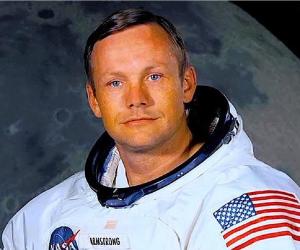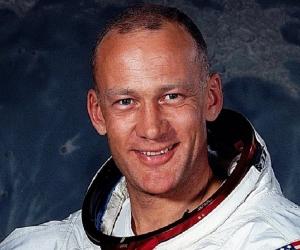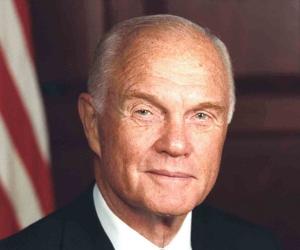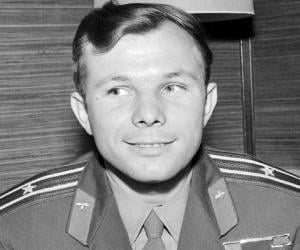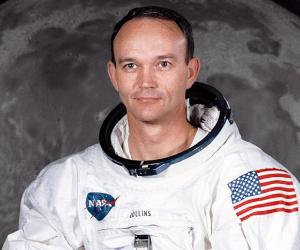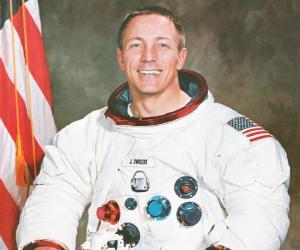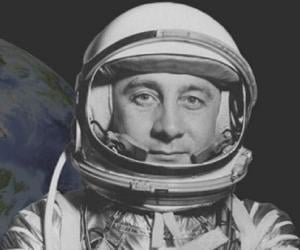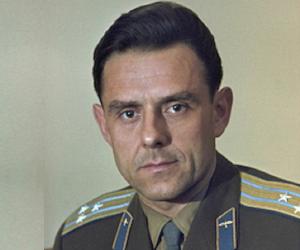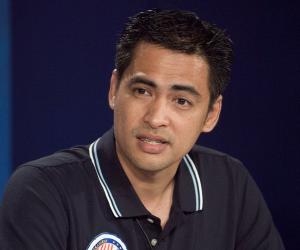The first person to walk on the Moon, Neil Armstrong was an astronaut and aeronautical engineer. Prior to his trip to the Moon, he became NASA's first civilian astronaut to fly in space. After resigning from NASA, he taught in the Department of Aerospace Engineering at the University of Cincinnati. He was a Presidential Medal of Freedom awardee.
The first American to orbit the Earth, John Glenn was an astronaut, aviator, politician, and businessman. Beginning his career as an army man, he was a fighter pilot in World War II. He later joined NASA and was one of the Mercury Seven. Following his retirement from NASA, he became a politician and served in the US Senate.
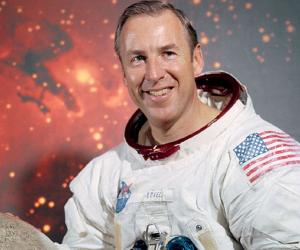
Retired American astronaut Jim Lovell commanded the iconic Apollo 13 mission and was one of the first three human beings to fly to the Moon, orbit it, and get back to Earth. He had also been a US Navy captain. Following his retirement, Lovell launched a restaurant in Lake Forest.
Michael Collins is an American astronaut who became the fourth person to perform a spacewalk. He is also the second person to orbit the Moon alone. Collins is best known for flying the Apollo 11 command module Columbia while Buzz Aldrin and Neil Armstrong landed on the Moon. In 1969, Michael Collins was honored with the Presidential Medal of Freedom.

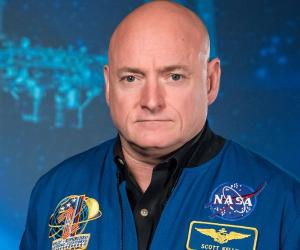
Scott Kelly is an American engineer, retired naval aviator, and astronaut. He is credited with commanding the International Space Station on three Expeditions. Scott Kelly is the recipient of several awards and honors, such as the NASA Distinguished Service Medal and National Defense Service Medal.

Chris Hadfield is a Canadian former astronaut, engineer, and singer. Hadfield, who has served in the International Space Station as a commander, is credited with flying two Space Shuttle missions. He is also the first Canadian to successfully carry out an extravehicular activity in space. Before becoming an astronaut, he served as an Air Command fighter pilot for 25 years.
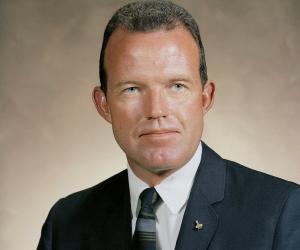
Part of the seven Project Mercury astronauts, Gordon Cooper manned a 34-hour space mission, becoming the first American to stay for a day in space. As part of the Gemini 5 mission, he and his co-pilot proved it was possible for astronauts to survive a mission to the Moon and back.
Jack Swigert was an American astronaut who flew to the moon and spent nearly six days in space. He was an engineer who also held a masters degree in business administration. He was involved in the infamous Apollo 15 postal covers incident. He ventured into politics with mixed fortunes. He was elected to the US Congress but died before being sworn in.

A doctorate in physics from MIT Cambridge, Ronald McNair worked on chemical lasers before joining NASA and in 1984 flew as a mission specialist on STS-41-B aboard Challenger, becoming the second African-American to do so. In January 1986, he was selected to fly on STS-51-L, but was killed along with rest of the crews when Challenger disintegrated soon after liftoff.
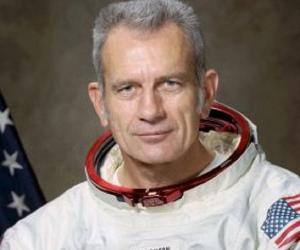
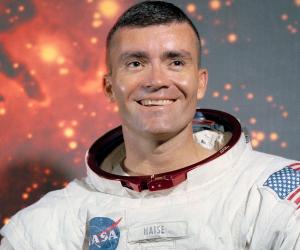
Fred Haise is an American retired engineer, NASA astronaut, and test pilot. He also served as a fighter pilot for the U.S. Air Force and U.S. Marine Corps. He was part of Apollo 13 and is one of 24 astronauts to have flown to the Moon. Fred Haise is the recipient of prestigious awards, including the Presidential Medal of Freedom.
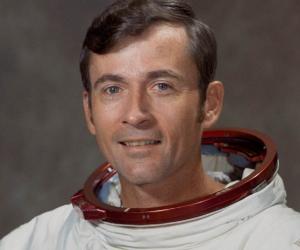
John Young was an American naval officer, astronaut, aeronautical engineer, and test pilot. In 1972, he commanded the Apollo 16 mission and became only the ninth person to walk on the Moon. John Young was the recipient of several awards, including the NASA Exceptional Achievement Medal. In 1982, he was made an inductee of the International Space Hall of Fame.
Gus Grissom was the second U.S. astronaut to fly into space. The Distinguished Flying Cross-winner had fought in World War II and the Korean War before being part of Mercury-Redstone 4 and Project Gemini. He died during a pre-launch test of the Apollo 1 mission, along with two colleagues.
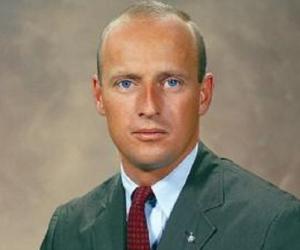
Pete Conrad was an American aeronautical engineer, NASA astronaut, aviator, test pilot, and naval officer. He is credited with commanding the Apollo 12 mission, during which he became only the third person ever to walk on the Moon. Apart from winning awards like the Harmon Trophy, Pete Conrad was also inducted into several Astronaut and Aviation Halls of Fame.
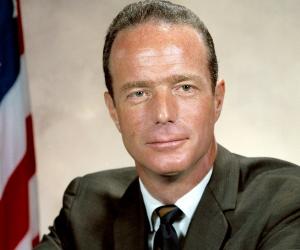
Scott Carpenter was an American aviator, aeronautical engineer, test pilot, naval officer, aquanaut, and astronaut. He achieved popularity in 1959, when he became one of the seven astronauts chosen for NASA's Project Mercury. Scott Carpenter was the recipient of several prestigious awards, including the NASA Distinguished Service Medal. In 1981, he was inducted into the International Space Hall of Fame.
Soviet cosmonaut Vladimir Komarov was the first from his country to fly into space twice. He died when his Soyuz 1 capsule crashed while re-entering the Earth, due to a parachute failure, on April 24, 1967, which made him the first human to die in a space flight.
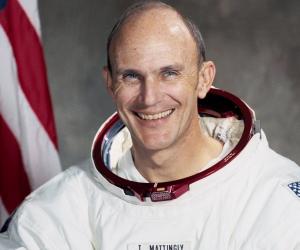
Ken Mattingly is a retired aviator, test pilot, aeronautical engineer, astronaut, and rear admiral in the US Navy. He was part of Apollo-16 and is one of 24 astronauts to have flown to the Moon. Mattingly is the recipient of numerous awards, including the NASA Distinguished Service Medal. In 1983, he was inducted into the International Space Hall of Fame.
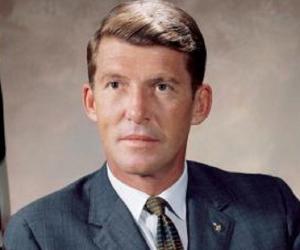
Wally Schirra was an American NASA astronaut, test pilot, and naval aviator. He achieved popularity in 1959, when he became one of the seven astronauts chosen for Project Mercury. In 1962, he was part of Mercury-Atlas 8 and became only the ninth human to travel into space. Wally Schirra was portrayed by Lance Henriksen in the film, The Right Stuff.
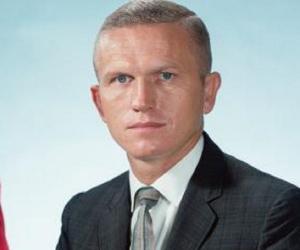
Frank Borman is an American former US Air Force colonel, test pilot, aeronautical engineer, businessman, and NASA astronaut. The commander of Apollo 8, Borman was the first of 24 astronauts to have flown to the Moon. In 1982, Frank Borman was made an inductee of the International Space Hall of Fame.
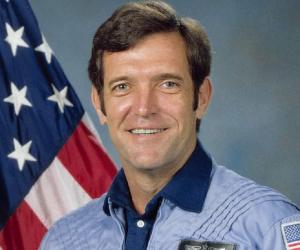
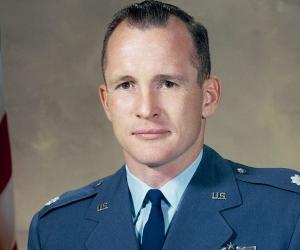
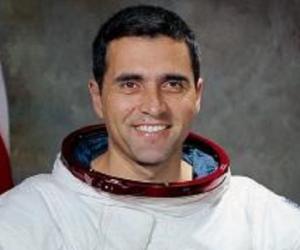
Harrison Schmitt is an American geologist, university professor, and former NASA astronaut. He also served as the US Senator from New Mexico from 1977 to 1983. In 1972, Schmitt became a crew member of Apollo 17 and subsequenly the second-youngest person to walk on the Moon. In 1973, Harrison Schmitt was honored with the NASA Distinguished Service Medal.
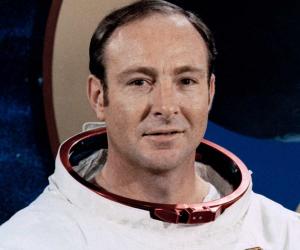
Edgar Mitchell was an American aviator, United States Navy officer, test pilot, NASA astronaut, ufologist, and aeronautical engineer. In 1971, Mitchell became only the sixth person ever to walk on the Moon. Over the course of his illustrious career, Edgar Mitchell was honored with several prestigious awards, such as the Presidential Medal of Freedom and the NASA Distinguished Service Medal.
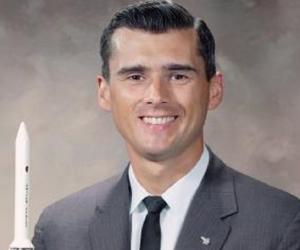
Roger B. Chaffee was an American aviator, naval officer, NASA astronaut, and aeronautical engineer. In 1963, Chaffee was chosen by NASA to be part of Astronaut Group 3, a group of 14 astronauts selected for the Apollo and Gemini program. In 1983, Roger B. Chaffee was made an inductee of the International Space Hall of Fame.
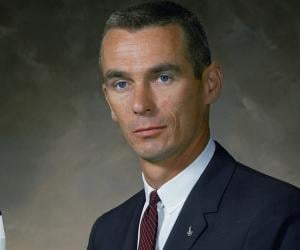
Eugene Cernan was an American naval aviator, astronaut, aeronautical engineer, electrical engineer, and fighter pilot. As of 2022, Cernan remains the last man to walk on the Moon, which he did in 1972 as part of the Apollo 17 mission. In 2007, Eugene Cernan was made an inductee of the International Air & Space Hall of Fame.
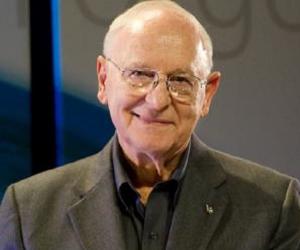
Alan Bean was an American aviator, test pilot, aeronautical engineer, NASA astronaut, US naval officer, and painter. He was part of Astronaut Group 3 and was only the fourth person ever to walk on the Moon. Apart from being honored with prestigious awards, Alan Bean was also made an inductee of several Astronaut and Aviation Halls of Fame.
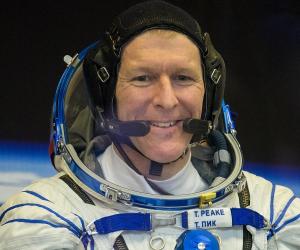
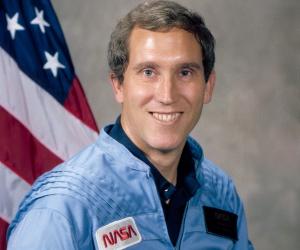
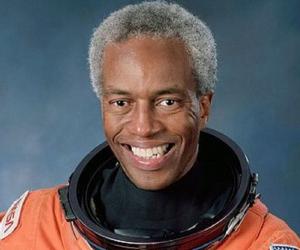
Retired US Air Force officer and NASA astronaut Guion Bluford scripted history as the 2nd African-origin person and the 1st African-American to go into space. A trained fighter pilot, he also flew over 100 combat missions in the Vietnam War. The STS-8 Orbiter Challenger crew member later worked in IT and engineering services.
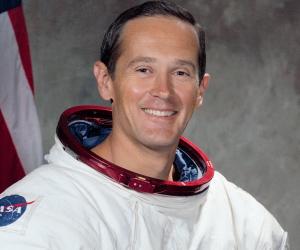
Former NASA astronaut Charles Duke has also been a USAF officer and test pilot. At 36, he became the youngest astronaut to walk on the surface of the Moon. Throughout his illustrious career, he went on 5 Apollo missions. He is also an international public speaker.
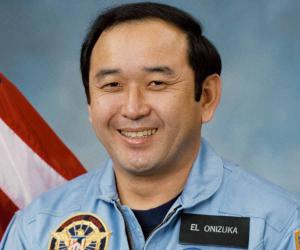
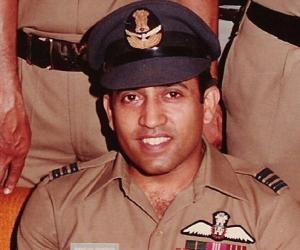
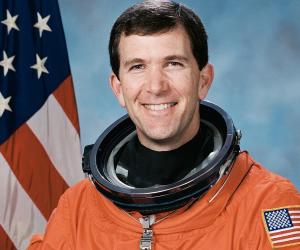
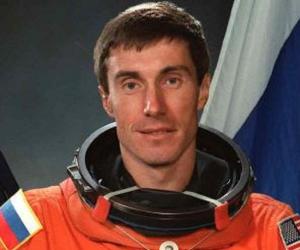
Soviet and Russian mechanical-engineer and retired cosmonaut Sergei Krikalev who spent 803 days, 9 hours and 39 minutes in space over the span of six spaceflights held the record of spending most time in space before his record was surpassed by Gennady Padalka on June 28, 2015. At present Krikalev ranks third in the list after Padalka and Yuri Malenchenko.
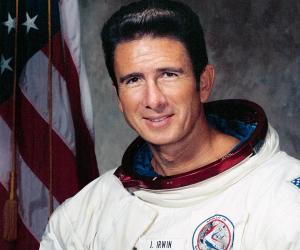
James Irwin was an American astronaut, test pilot, aeronautical engineer, and a US Air Force pilot. He was part of the Apollo 15 mission and became only the eighth person ever to walk on the Moon. He was the recipient of several prestigious awards. In 1983, James Irwin was made an inductee of the International Space Hall of Fame.
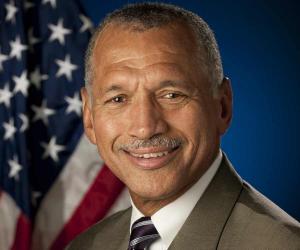
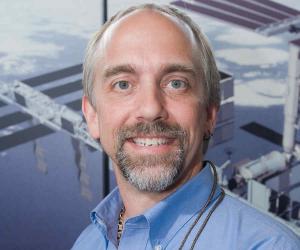
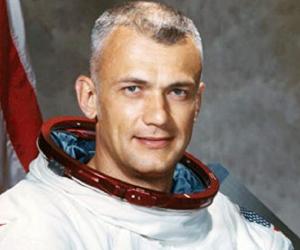
US Navy officer, aviator, and NASA astronaut Bruce McCandless II was the first person to complete an untethered spacewalk. He also contributed to the development of the Manned Maneuvering Unit. Post-retirement, he became a research scientist. He once sued singer Dido for using one of his space flight photos as an album cover.
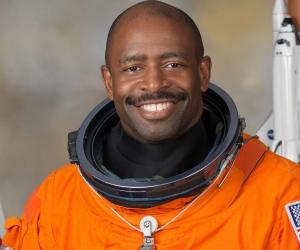
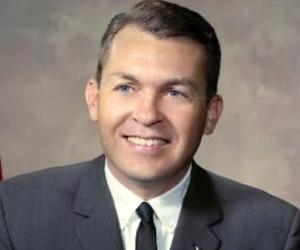
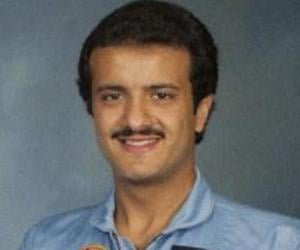
Sultan bin Salman Al Saud is a Saudi prince best known for his service as a fighter pilot in the Royal Saudi Air Force. A payload specialist, Sultan flew aboard one of NASA's Space Shuttle missions. The first Arab and the first Muslim in space, Sultan has been honored with many prestigious awards, including the NASA Space Flight Medal.
Sheikh Muszaphar Shukor went from being an orthopaedic surgeon to becoming the first Malaysian man to fly into space. Chosen out of 11,000 applicants to join the Malaysian-Russian collaborative space initiative Angkasawan, he became a national hero. He also conducted various medical research experiments while in space.
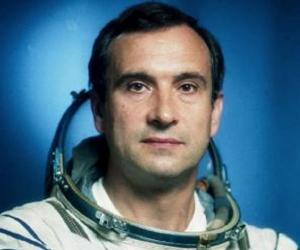
Valeri Polyakov is a Russian retired astronaut who holds the record for the longest single stay (437 days 18 hours) in space. He achieved this record when he stayed aboard the Mir space station for over 14 months during one of his trips. Over the course of his illustrious career, Valeri Polyakov was honored with several prestigious awards.

Distinguished Canadian politician, Marc Garneau, began his career as a naval officer and while in service became the first Canadian to travel to the outer space, eventually becoming the President of Canadian Space Agency. Elected to the Parliament as a member of the Liberal Party, he was named Minister of Transport in 2015 and Minister of Foreign Affairs in 2021.
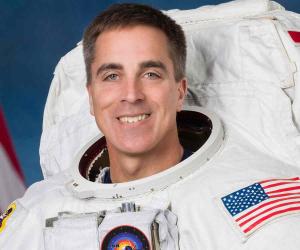
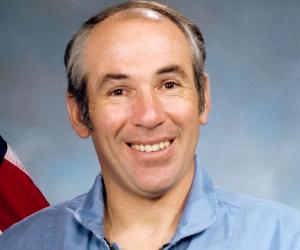
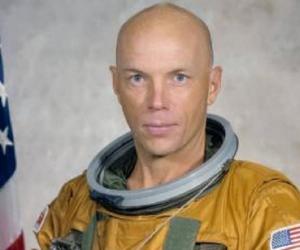
US physician and astronaut Story Musgrave initially worked for the US Marine Corps. Before joining NASA, he gained a host of degrees, in subjects such as literature, math, and chemistry, and an MD from Columbia University. He became the 2nd astronaut to make 6 space flights and later worked for Imagineering and Applied Minds.
